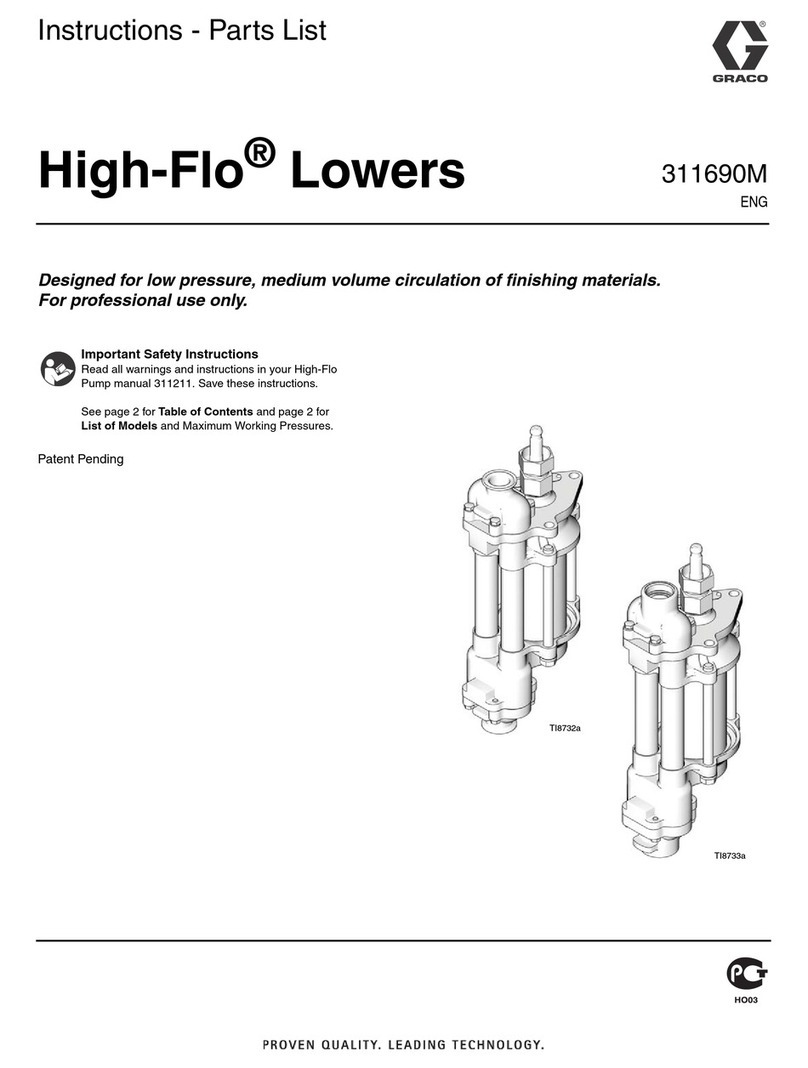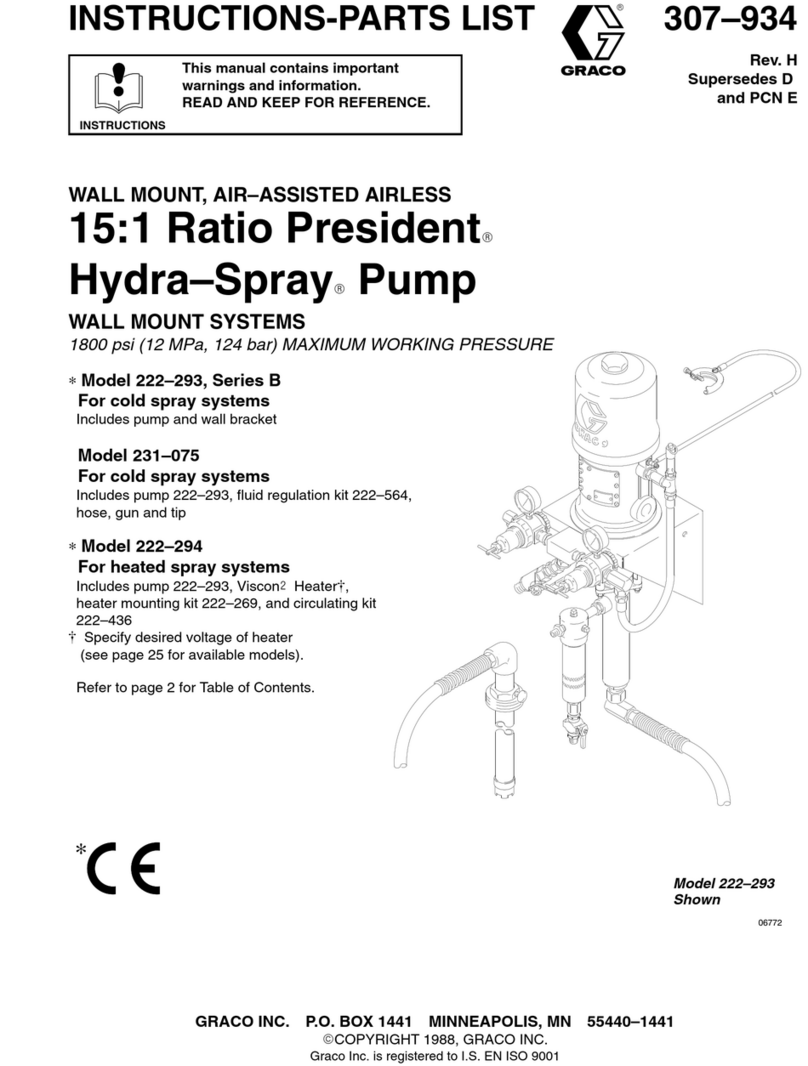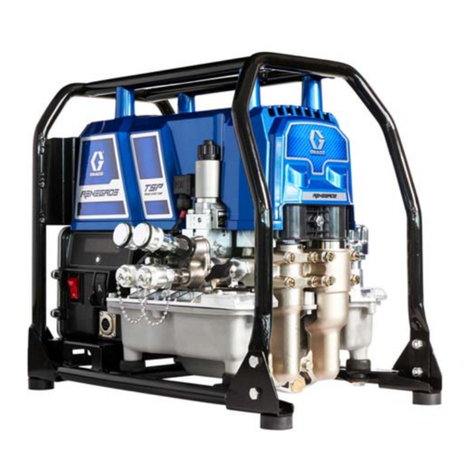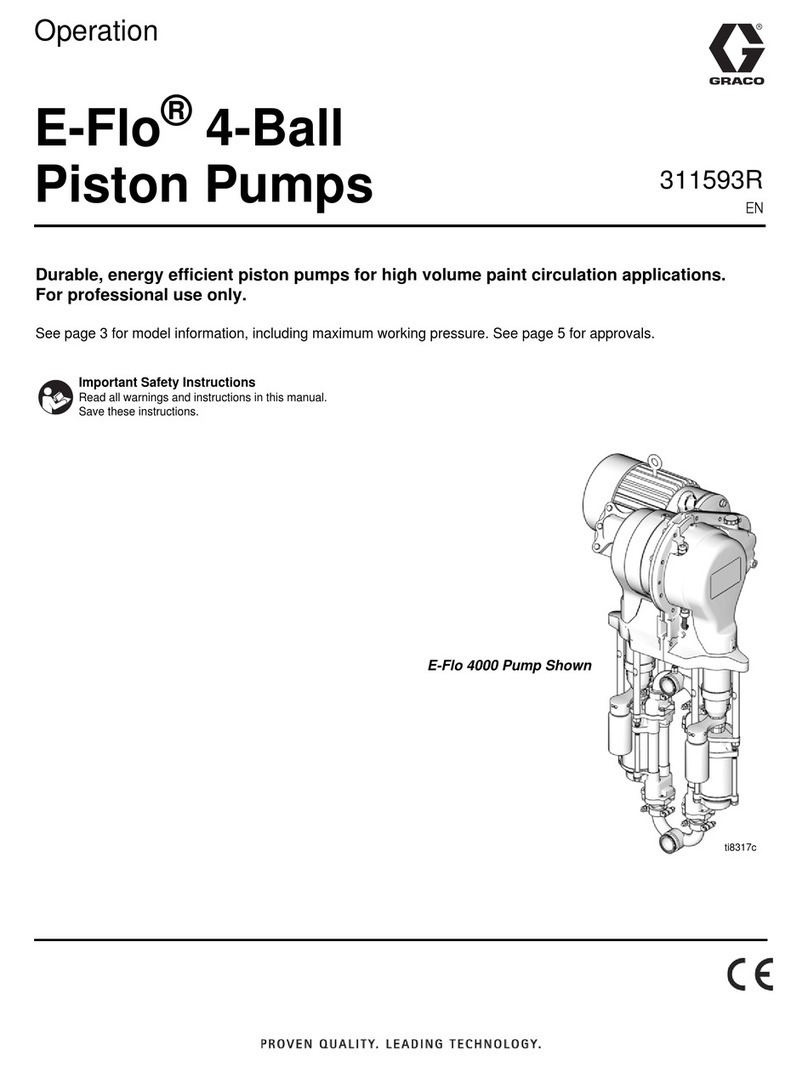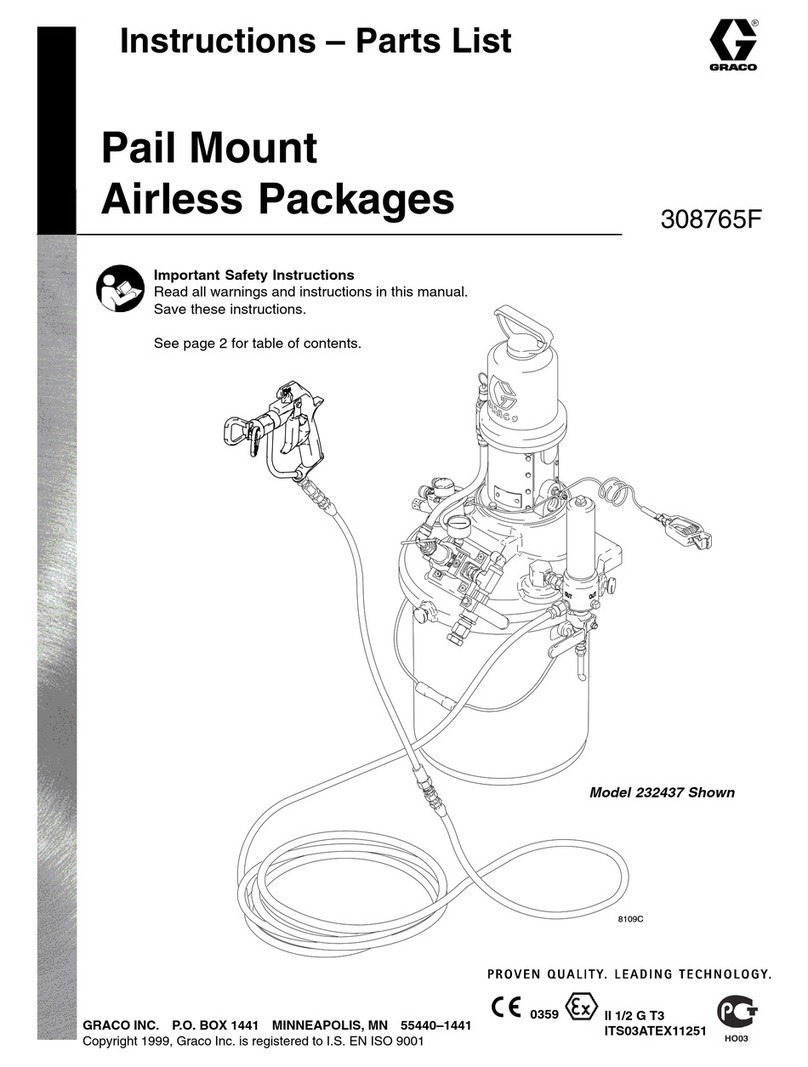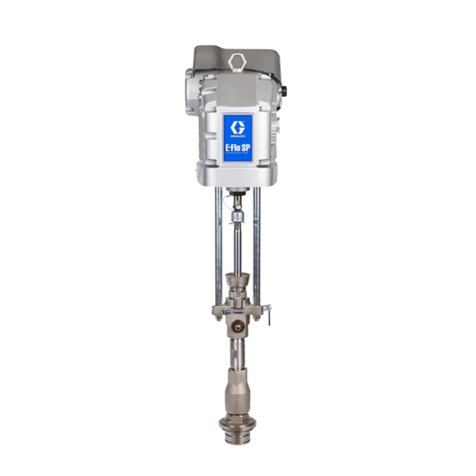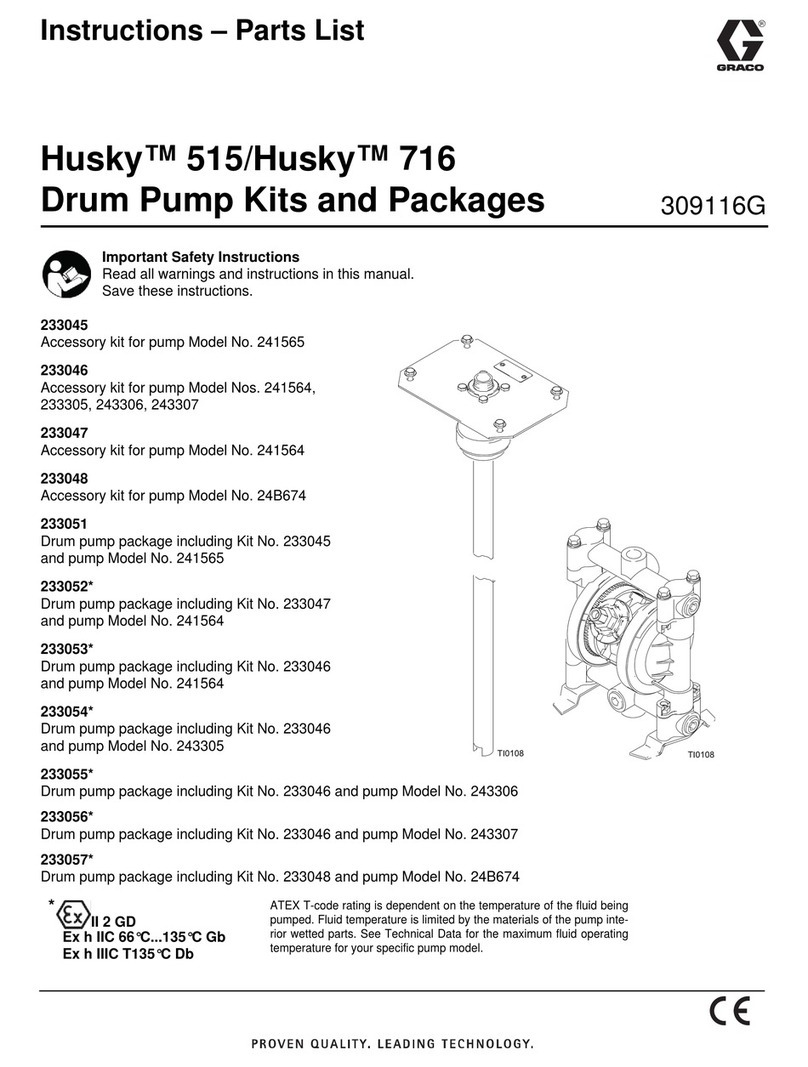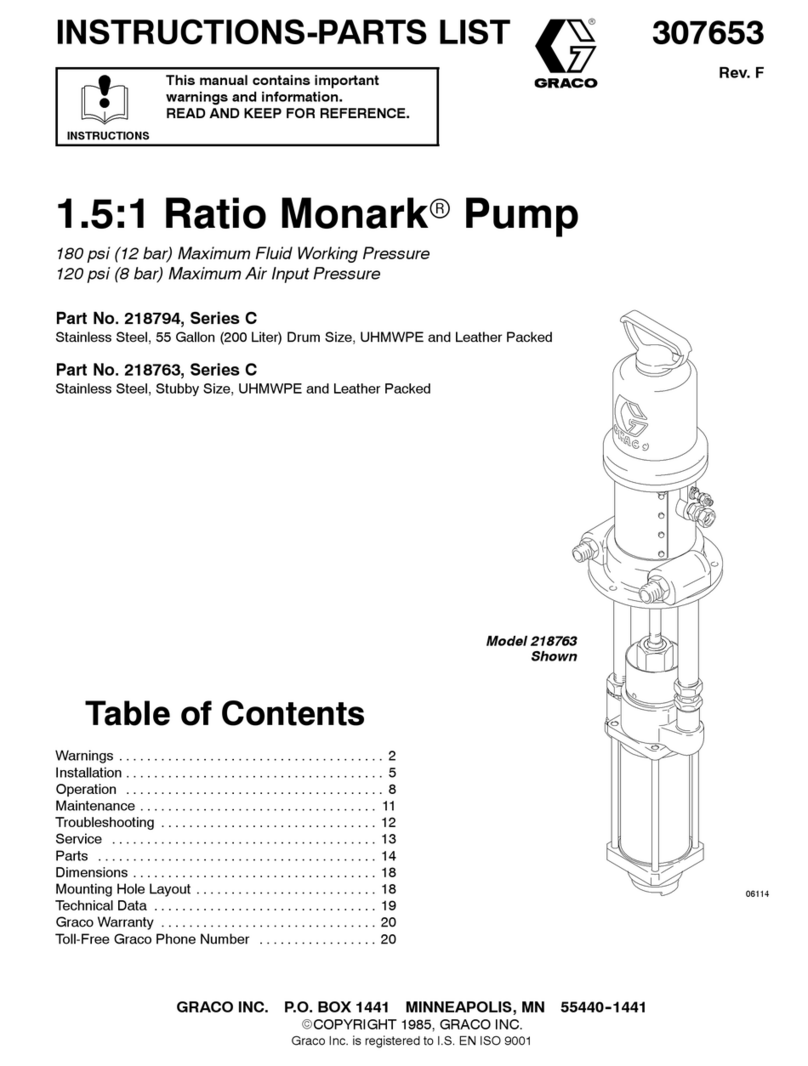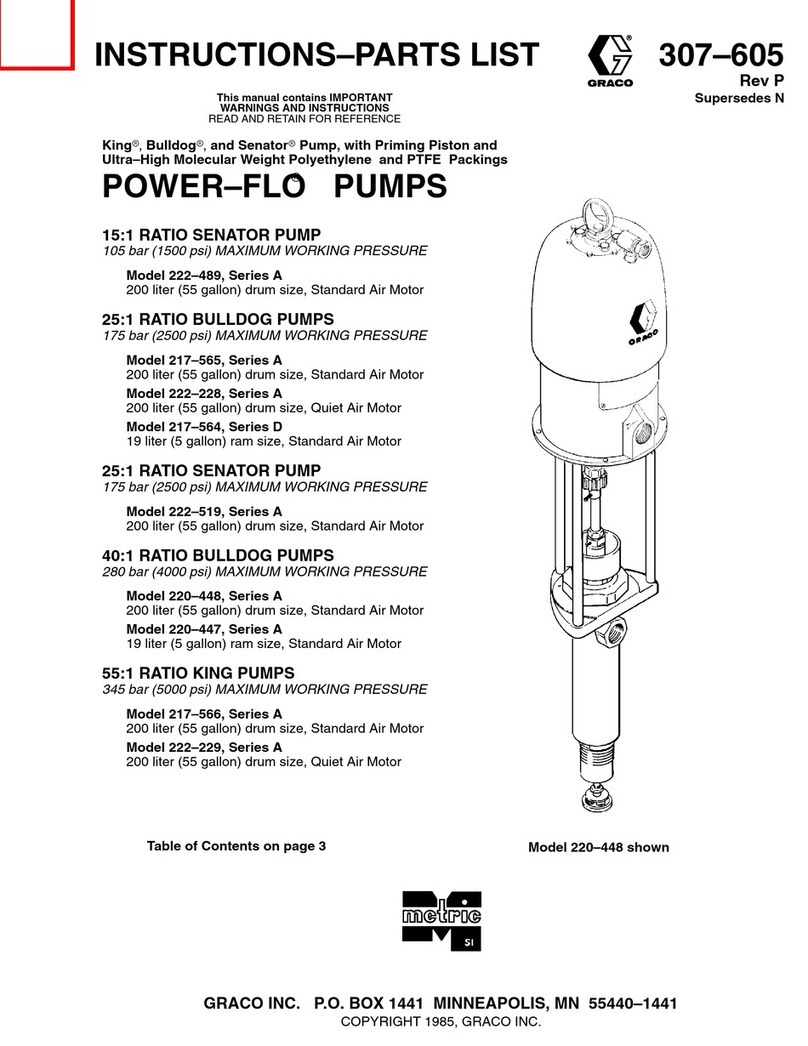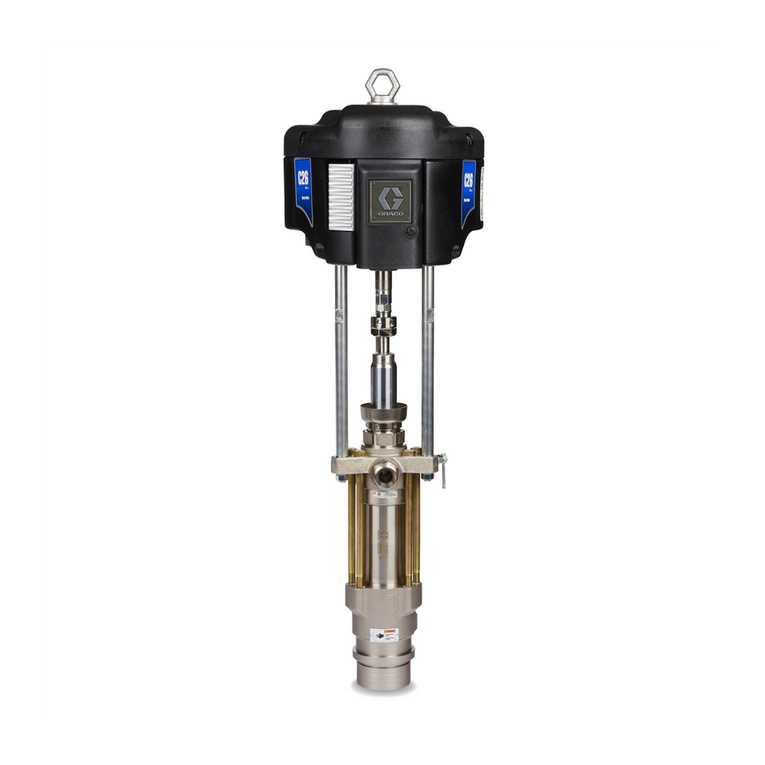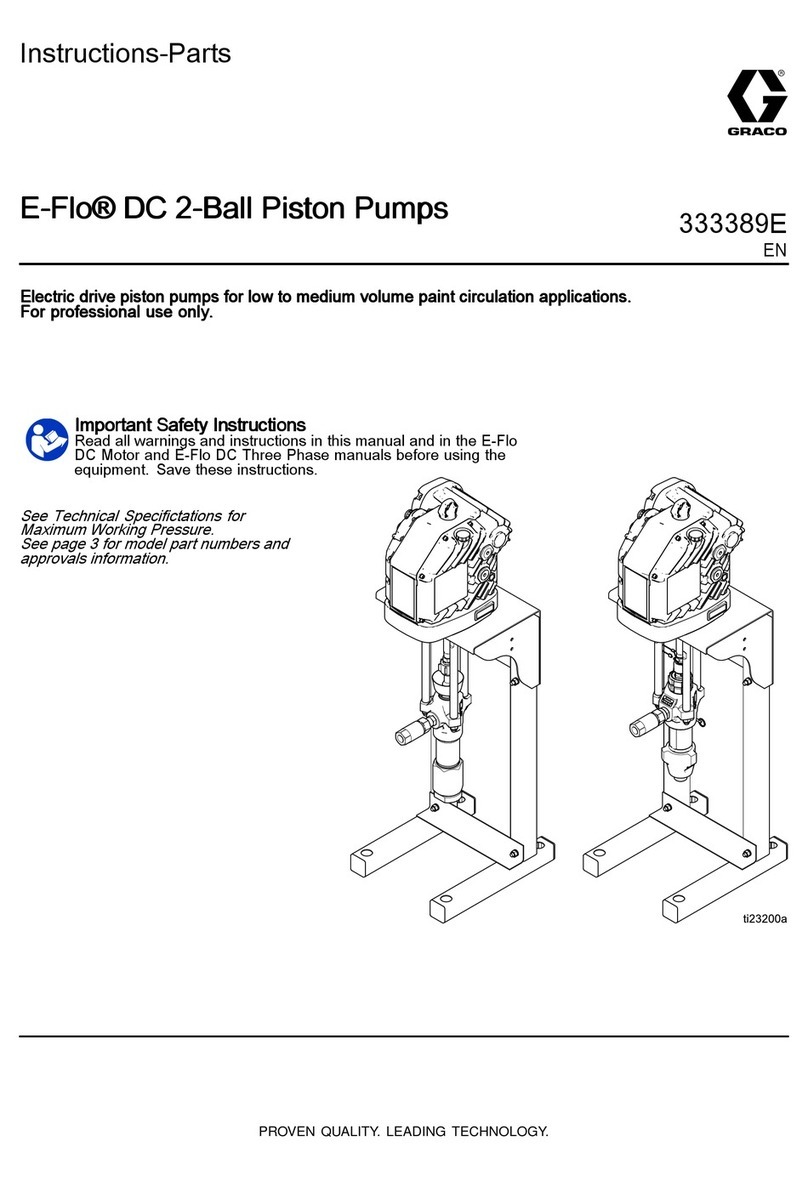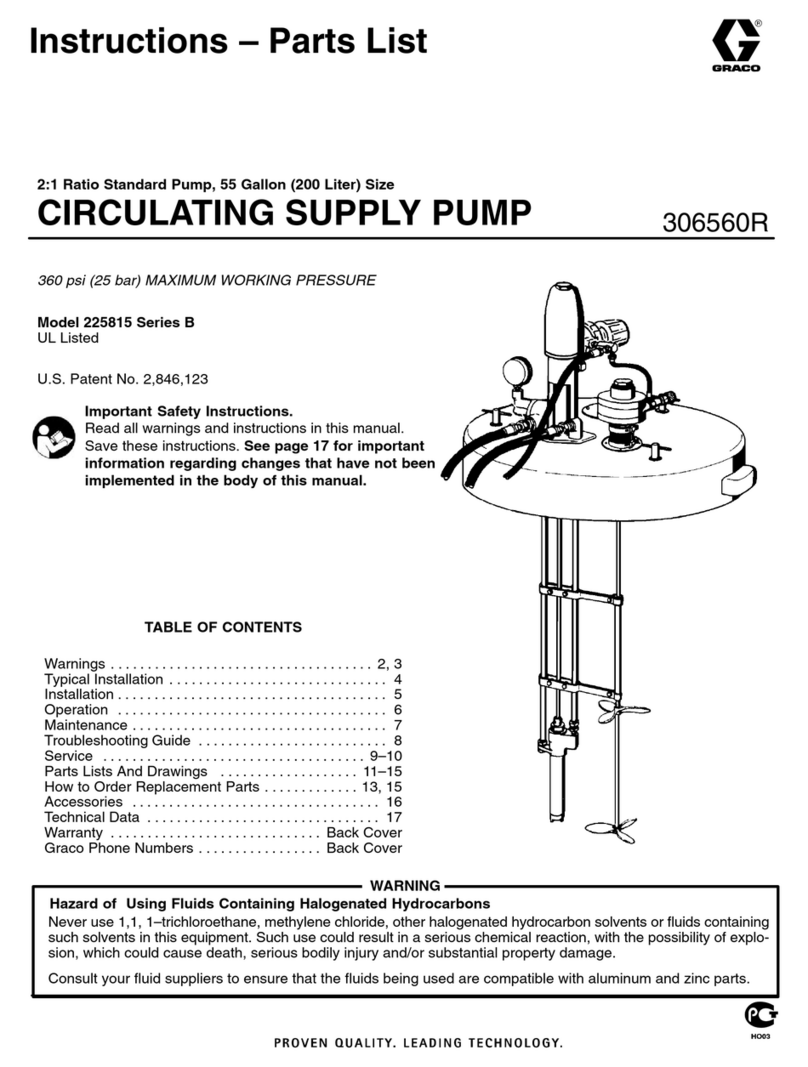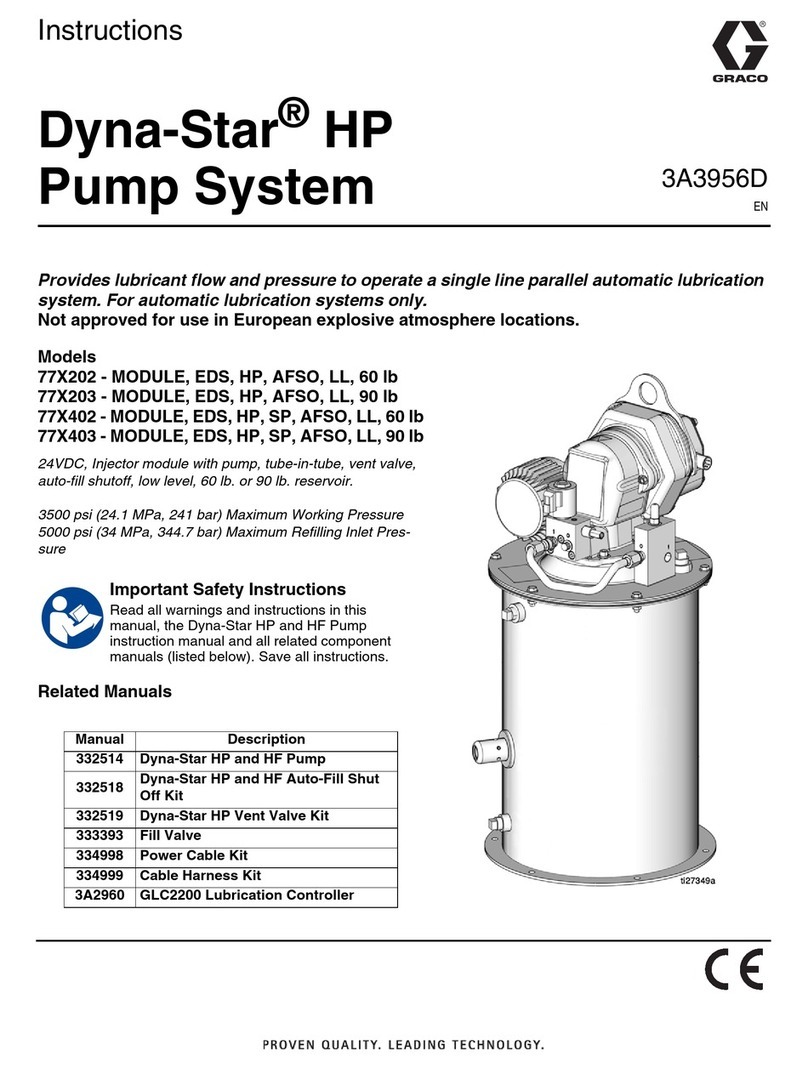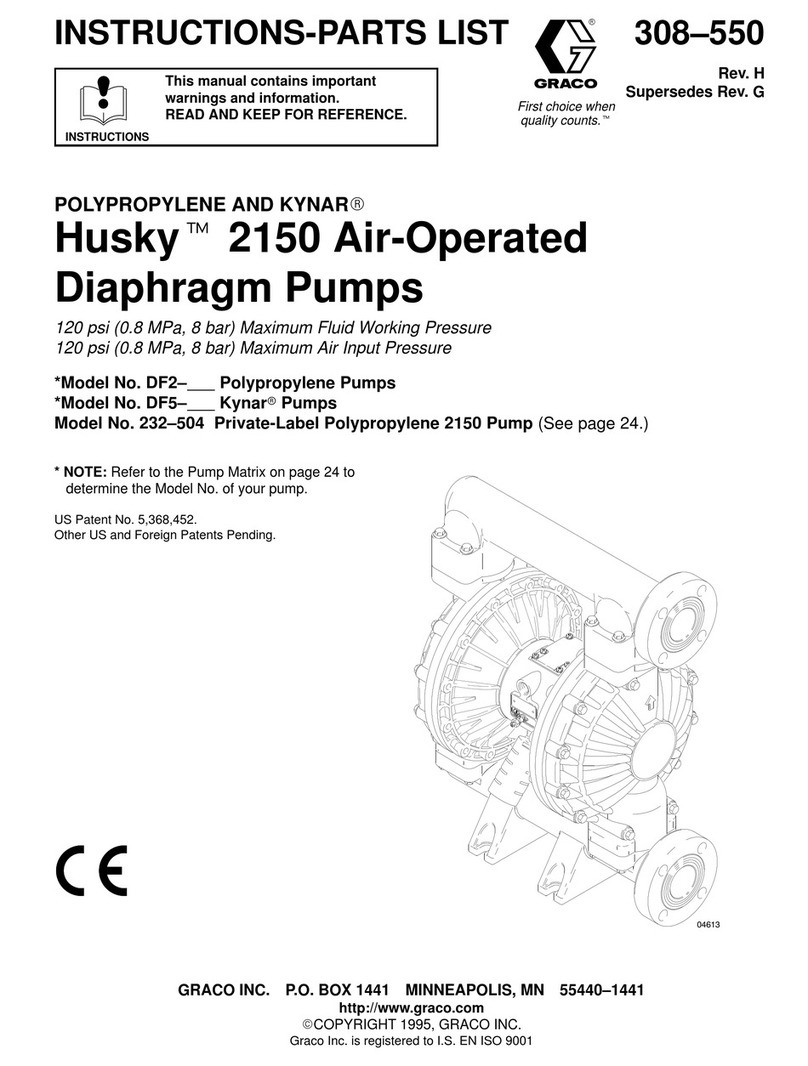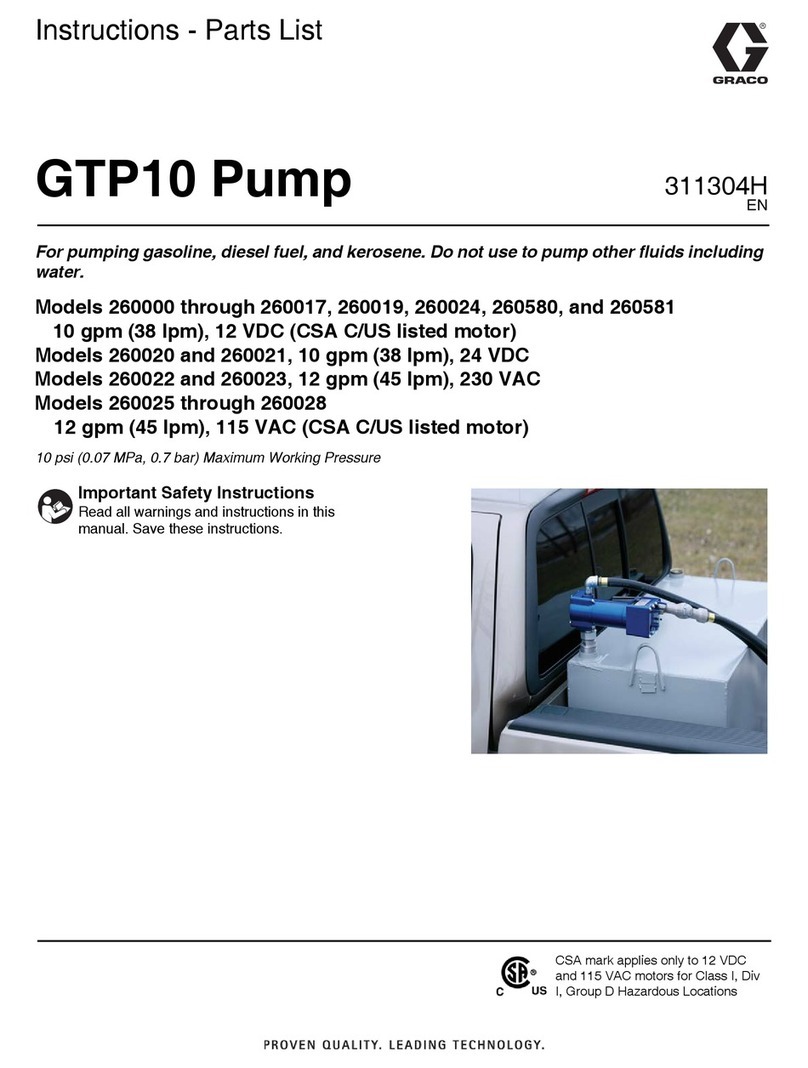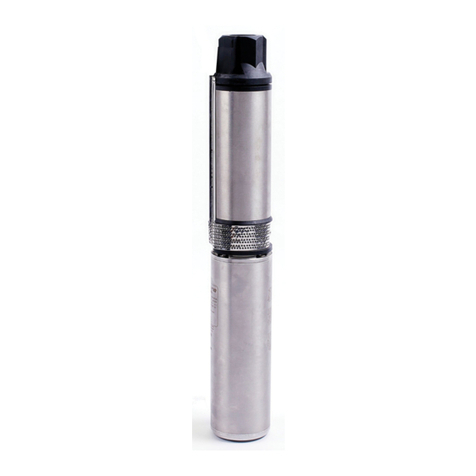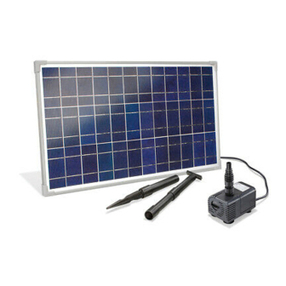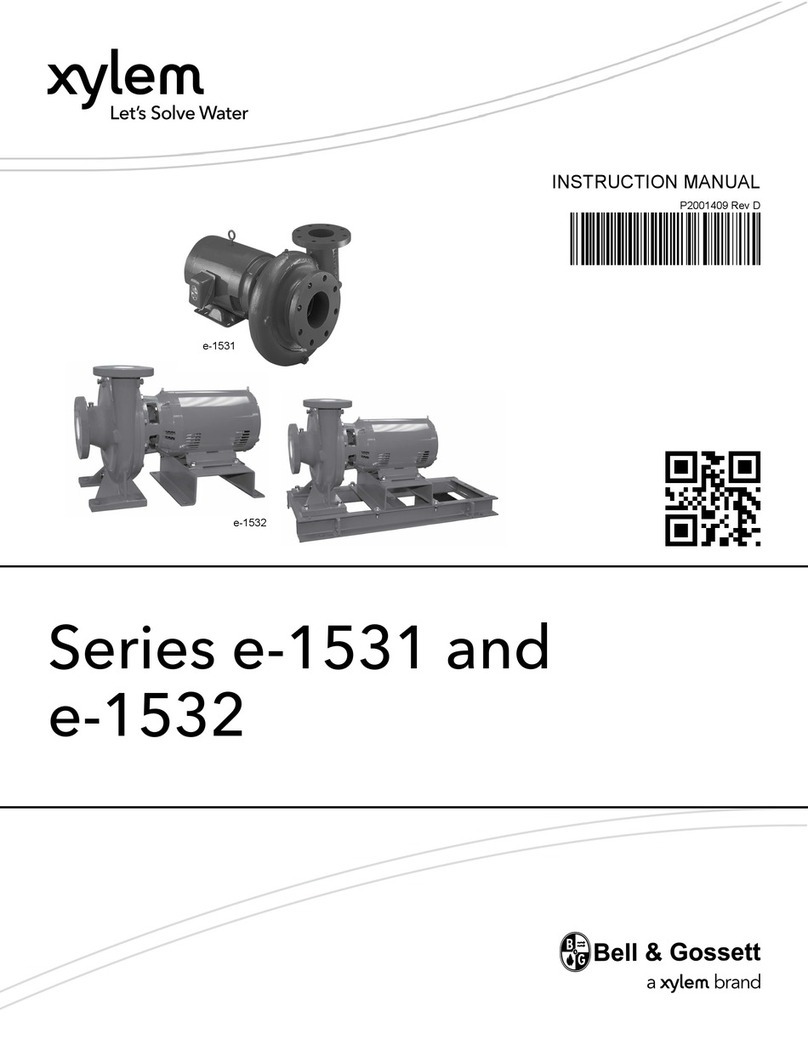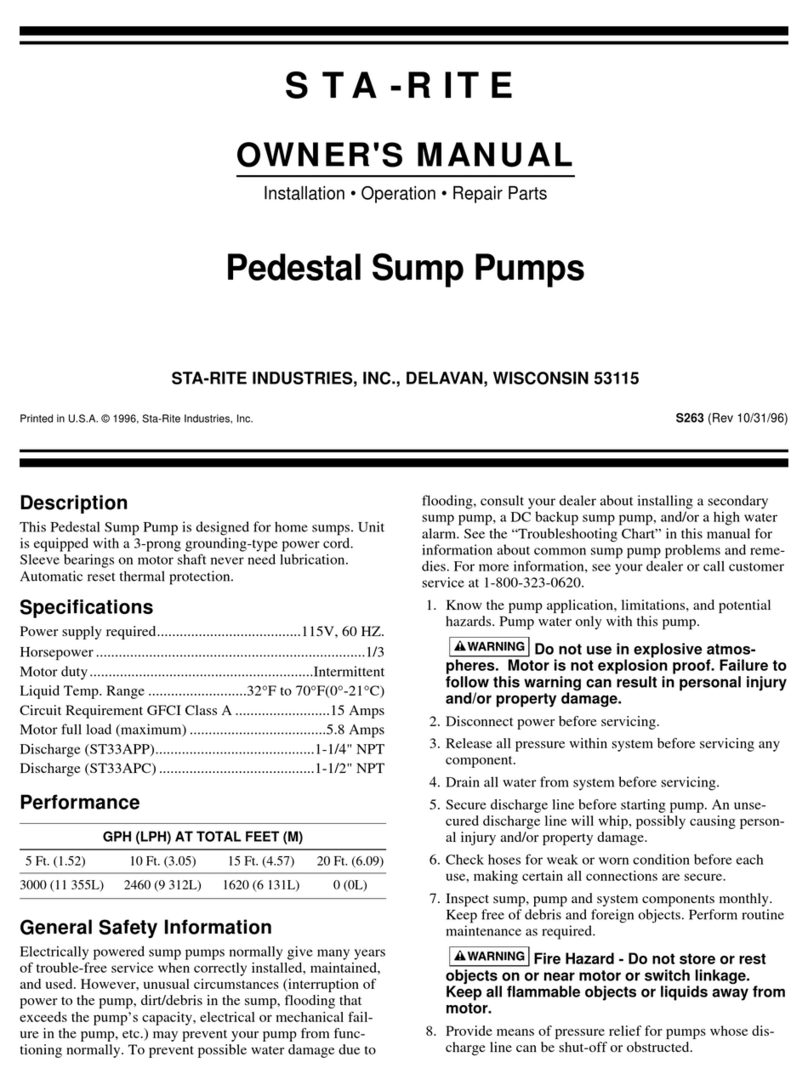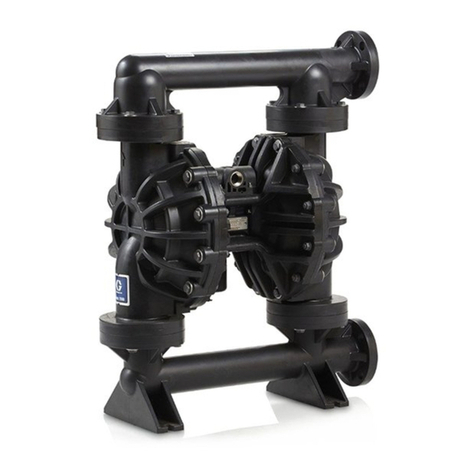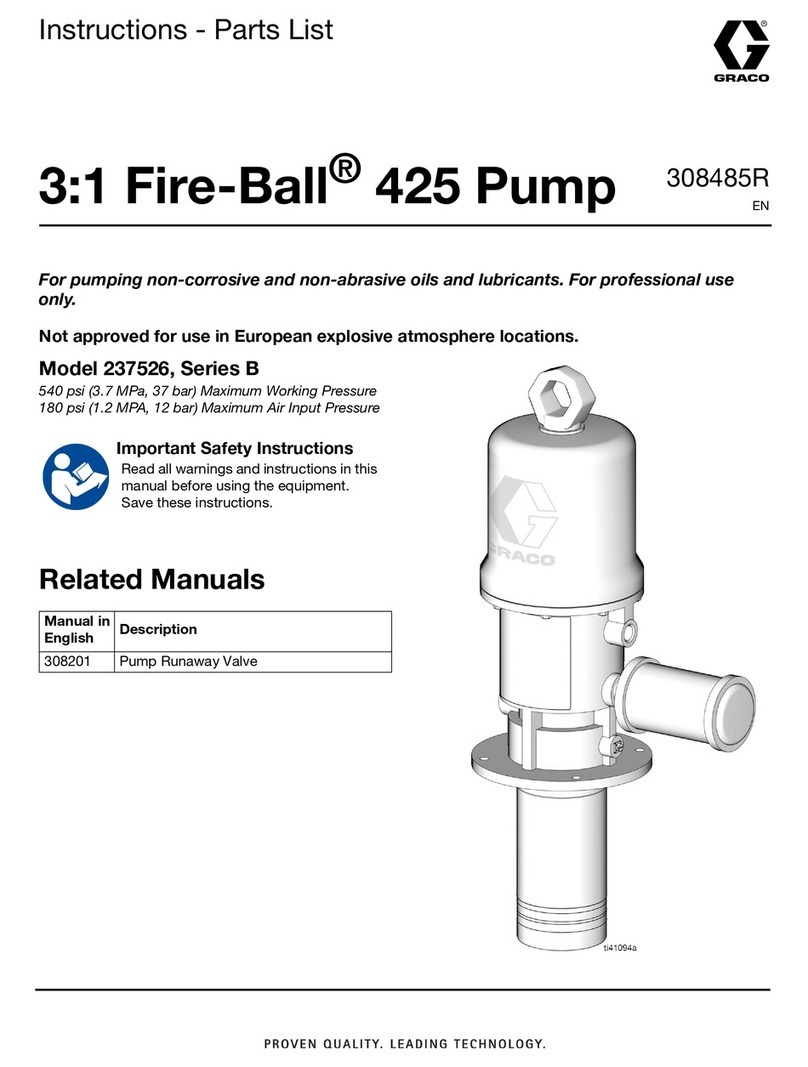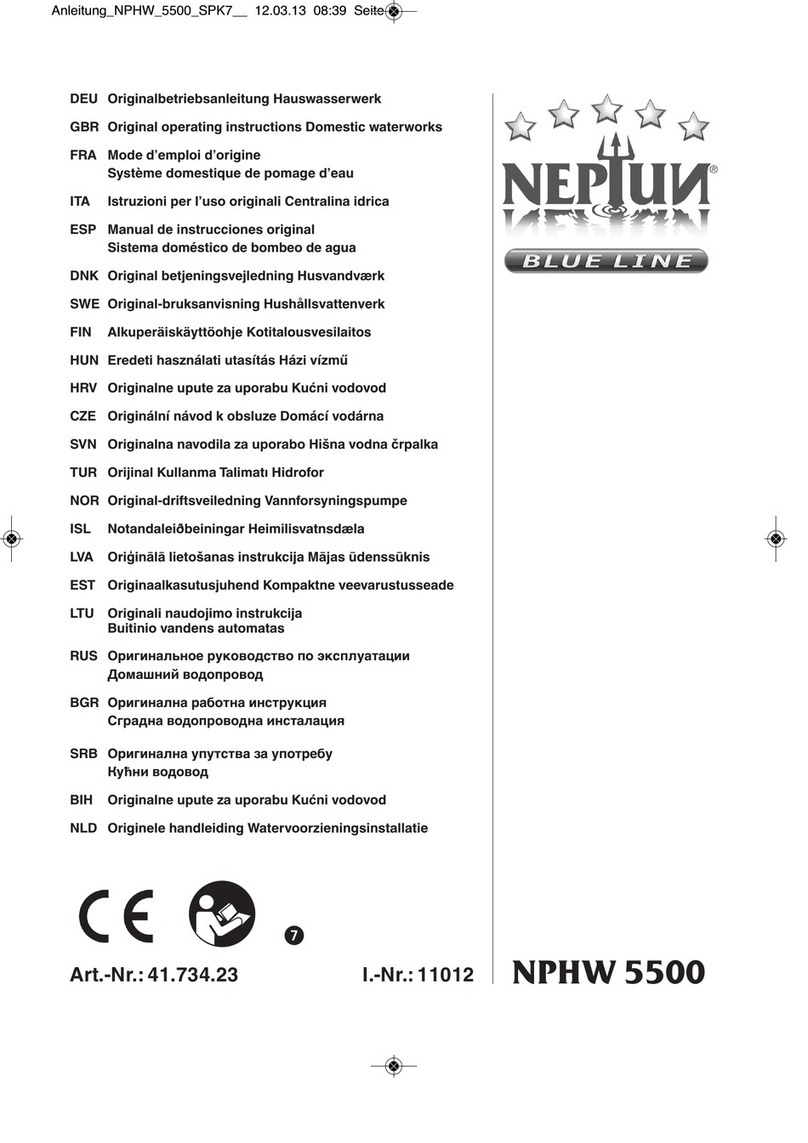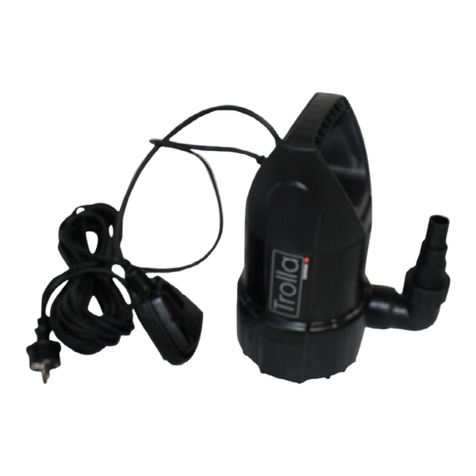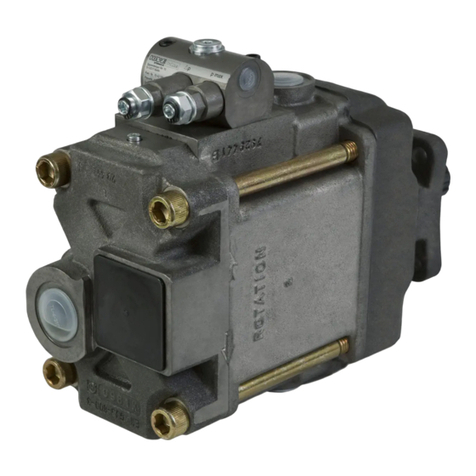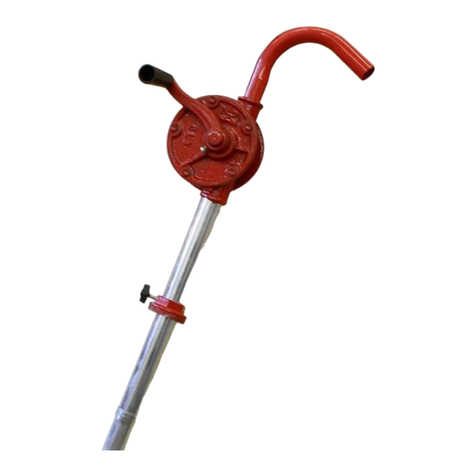
8307013
Operation
WARNING
Moving parts can pinch or amputate your fingers or
other body parts. When air is supplied to the motor,
the air motor piston (located behind the air motor
shield) moves. Therefore, never operate the pump
with the ar motor shield removed.
Flush the Pump Before Using
The pump is tested with lightweight motor oil, which is
left in to protect the pump parts. If the fluid you are
pumping may be contaminated by the oil, flush out the
oil with a compatible solvent before using the pump. If
the pump is being used to supply a circulating system,
allow the solvent to circulate until the pump is thor-
oughly flushed.
WARNING
For your safety, read the warning section, FIRE
AND EXPLOSION HAZARD on page 3 before
flushing, and follow all instructions given there.
Starting and Adjusting the Pump
WARNING
To reduce the risk of serious injury whenever you
are instructed to relieve pressure, always follow the
Pressure Relief Procedure on page 7.
See the Typical Installation on page 5. Be sure the air
regulator (E) and bleed-type master air valve (D) are
closed. Do not install the spray tip yet.
Connect a suction hose (M) to the pump’s fluid inlet.
Hold a metal part of the spray gun (L) firmly to the side
of a grounded metal pail and hold the trigger open.
Then open the pump’s bleed-type master air valve (D).
Now slowly open the air regulator until the pump starts,
about 20 psi (140 kPa, 1.4 bar).
Cycle the pump slowly until all the air is pushed out,
and fluid is flowing from the gun in a steady stream.
Release the spray gun trigger and lock the trigger
safety. The pump should stall against pressure when
the trigger is released.
Relieve the pressure, then install the spray tip in the
gun.
In a direct supply system, with the pump and lines
primed and with adequate air pressure and volume
supplied, the pump will start and stop as the spray gun
is opened and closed. In a circulating system, the
pump will run continuously and will speed up or slow
down as supply demands until the air supply is shut
off.
Use an adequately sized air regulator (E) to control the
pump speed and the fluid pressure. Always use the
lowest air pressure necessary to get the desired
results. Higher pressures waste fluid and cause pre-
mature wear of the pump packings and spray tip.
Keep the packing nut/wet-cup (S) half filled with Graco
Throat Seal Liquid (TSL) or compatible solvent, to help
prolong the packing life. Adjust the packing nut weekly
with the wrench (supplied) so it is just tight enough to
prevent leakage; do not overtighten. Always relieve
the pressure before adjusting the packing nut.
Never allow the pump to run dry of the fluid being
pumped. A dry pump will quickly accelerate to a high
speed, possibly damaging itself. A pump runaway
valve (B), which shuts off the air supply to the pump if
the pump accelerates beyond the pre-set speed, is
available. See the Typical Installation on page 5. If
your pump accelerates quickly, or is running too fast,
stop it immediately and check the fluid supply. If the
supply container is empty and air has been pumped
into the lines, refill the container and prime the pump
and the lines with fluid, or flush and leave it filled with a
compatible solvent. Be sure to eliminate all air from the
fluid system.
Shutdown and Care of the Pump
For overnight shutdown, relieve the pressure. Always
stop the pump at the bottom of the stroke to prevent
the fluid from drying on the exposed displacement rod
and damaging the throat packings.
Always flush the pump before the fluid dries on the
displacement rod. Never leave water or water-based
fluid in the pump overnight. First, flush with water or a
compatible solvent, then with mineral spirits. Relieve
the pressure, but leave the mineral spirits in the pump
to protect the parts from corrosion.
Check Valve Adjustment
Refer to the separate displacement pump manual
307728 for check valve adjustment information.
